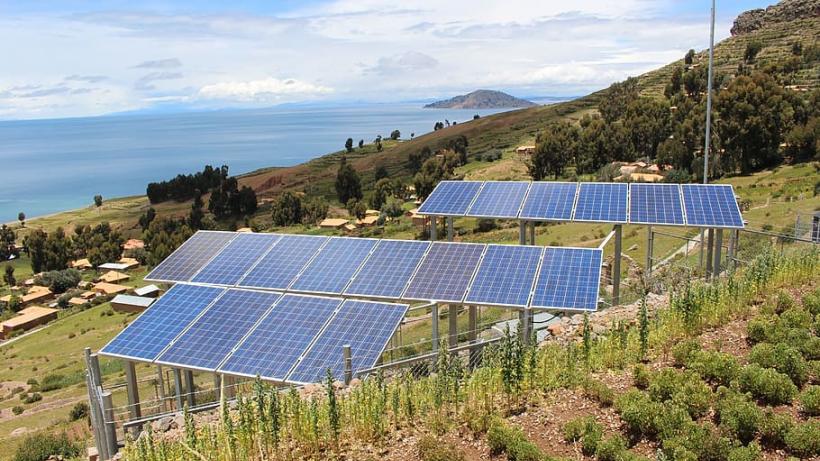
Invest in energy access for a resilient recovery from COVID-19 in fragile environments
The COVID-19 pandemic has exposed many inequities, both within countries and across the world. The least developed countries and those affected by fragility and conflict have been particularly hard hit by the economic impacts of COVID-19, experiencing unprecedented declines in commodity prices and remittances and a collapse in earnings at the household, firm, and national level. These shocks are exacerbating existing vulnerabilities in these fragile contexts and threaten to reverse decades of progress.
As devastating as COVID-19 has been, it has also brought to the fore an essential reckoning and has created a unique window of opportunity for us to opt for a different path, to make choices now that support building back in a more sustainable, inclusive, and resilient manner.
Central to a resilient recovery will be addressing the global crises of poverty and climate change. These are having a deeply marked impact on fragile and conflict-affected states. Prior to COVID-19, it was estimated that, by 2030, half of the world’s poor would be living in fragile states, a situation likely worsened by COVID-19. Fragile contexts are also bearing the brunt of climate change, which is aggravating existing drivers of fragility in these places, such as over-reliance on rain-fed agriculture and conflict over diminishing resources.
A resilient recovery will need to involve creating broad-based economic opportunities while also combating climate change. Energy access will be essential in this, as it serves as a critical lever for unlocking economic growth, human development, and environmental sustainability. Pivoting toward renewable energy technologies in this process will be particularly important. As the gap between the global growth trajectory and the world’s poorest and most fragile countries widens, expanding energy access in these states has never been more urgent.
Why renewable energy?
It has also never been more achievable. The costs of renewable energy technologies have come down considerably in recent years and now frequently outcompete fossil fuels on cost. Indeed, of all newly commissioned utility-scale renewable power generation capacity in 2019, 56% of them achieved costs lower than the cheapest fossil fuel-fired option. Adopting green energy technologies and driving economic growth are no longer in tension – in fact, poorer countries can no longer afford not to go green.
In addition to cost considerations, there are a number of other reasons why renewable energy technologies should be favoured in fragile and conflict-affected situations, notably their synergy with distributed generation systems. In contexts where large-scale energy infrastructure (such as power plants and distribution and transmission lines) is at risk of physical damage or destruction due to conflict, distributed generation technologies offer greater resilience as they:
- Spatially distribute risk and lower the likelihood of system-wide failure
- Use locally available renewable energy sources, reducing dependency on imports and transportation
- Allow for a diversified energy supply, increasing resilience
- Are less dependent on functioning government systems and institutions, or political and social stability
- Are modular, flexible, and less capital-intensive, making them easier and quicker to build and manage in unpredictable, conflict-prone situations.
In fragile environments, where planners have to operate in a context of radical uncertainty, they should use robust decision-making approaches favouring solutions that are effective in a range of potential future scenarios. Distributed renewable generation technologies are ideal in this regard, especially where they can be made compatible for connection to the national grid, should the national grid extend to those areas.
Importantly, at a time when recovery efforts are urgent, distributed renewable generation technologies can be rolled out quickly. Manufacturing equipment and installing and maintaining these systems will create jobs that support recovery at this critical time – energy access investments have strong multiplier effects, unleashing wide-ranging economic activity.
While the cost of renewable energy technologies has come down, these systems remain unaffordable for the majority of those living in fragile contexts. Bridging this gap will require a combined push from international organisations, donors and philanthropic foundations, and the private sector, as well as leveraging new and existing innovative financing solutions, including pay-as-you-go platforms for both solar lighting and liquefied natural gas (LNG) for cooking.
A path out of fragility
Expanding energy access will also play a critical role in moving countries out of fragility. Energy access enables the creation of jobs and livelihoods that ensure people benefit more from stability than from conflict, thereby contributing to a broad-based commitment to peace. And because the consequences of energy access are literally visible and yield quick, concrete benefits, it also builds trust in government and state legitimacy in the eyes of citizens, which are necessary ingredients for state building.
A big push in expanding energy access will not only put us on a track toward more sustainable, inclusive, and resilient growth post-COVID-19, but it can also have a tangible impact on moving some of the world’s poorest countries out of conflict and fragility. The investment decisions we make now will shape the economy, and the world, of the future – investing in energy access will make a better future possible for hundreds of millions of people.

